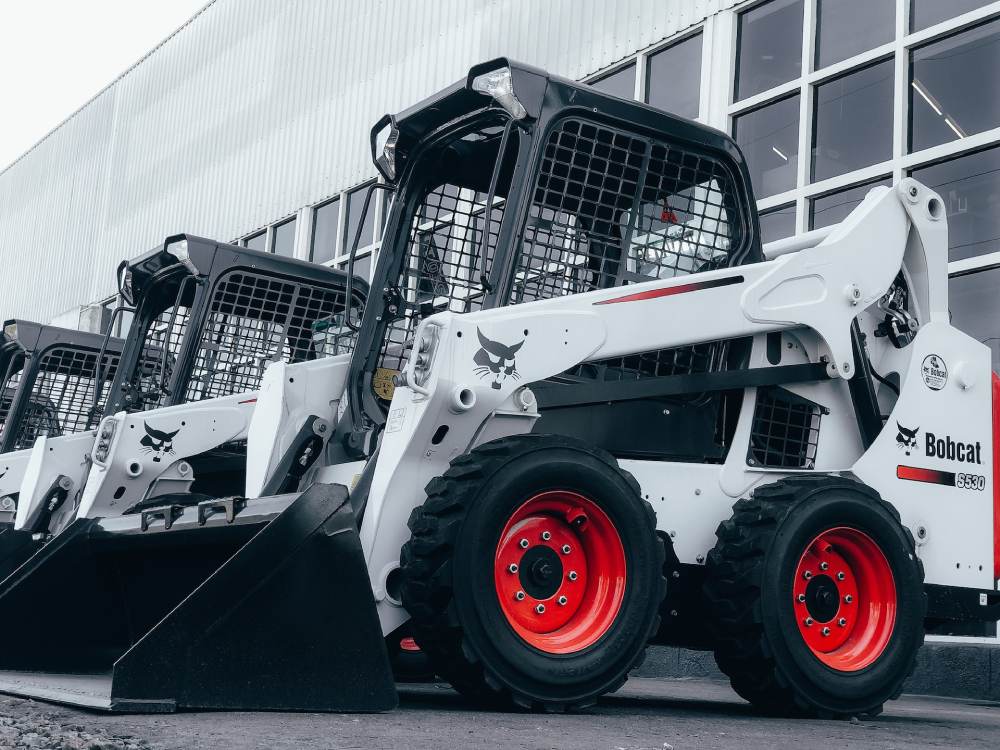Purchasing a used skid steer for your business has several benefits. This includes saving on the initial investment and reallocating this money toward other areas of your operations. However, when shopping for a used skid steer, it is essential to inspect it thoroughly. This includes examining the vehicle for scuffs, cracks, scratches, dents, and worn cables or welds.
Reduced Upfront Investment
Purchasing equipment is often a business’s most significant investment. This is especially true for skid steer loaders. Fortunately, saving up-front costs is possible by opting for a used model.
Skid steers depreciate rapidly after leaving the manufacturing plant like other types of machinery. However, as they age, that rapid loss of value slows down. This is particularly beneficial for business owners who require the use of a skid steer on an occasional basis, as it will take years to recoup the initial purchase price when compared to the cost of renting one.
When evaluating a used skid steer for sale, there are several factors to consider that can help determine its condition and quality. For example, examining the skid steer’s fluid levels is essential to ensure they are adequate.
If the fluids are low or contaminated, it could indicate that the machine hasn’t received routine maintenance or necessary repairs. Also, look for signs of mechanical damage, such as oil leaks and dents. Lastly, it’s critical to evaluate how comfortable and convenient it is to operate the machine.
Lower Maintenance Costs
When you buy used equipment, it has already depreciated, meaning your purchase price will be less than the cost of purchasing new. You will also save on taxes, registration fees, and other initial expenses. When choosing a used skid steer, it’s essential to consider the condition and age of the machine.
If it has logged too many hours, you could face high maintenance costs moving forward. The type of work it has done will also play a role in its wear and tear. If it’s been used for intermittent snowplowing or loading hay bales, it will look much different than one that’s been in heavy-duty construction use all the time.
Look for signs of wear and tear during your inspection, including cracks and dents. Listen to the engine for strange noises, and examine the tracks for deep cuts or damage. It’s also worth considering how easily you can get parts for the skid steer if you need to make repairs. If you discover the details are expensive and difficult to get, this could add to a significant maintenance cost over time.
Increased Productivity
A good skid steer should have a rated operating capacity that matches up with the amount of work you need it to do. The higher the rated operating capacity, the more power it has to handle heavier loads and grueling applications like snow plowing or construction demolition. You’ll also want to look at a machine’s horsepower to understand its power output.
While a higher horsepower rating may mean it’s more powerful, you must consider other factors like engine size, operating speed, and torque to determine if that engine type is right for your business. Purchasing a used skid steer for sale can help save your business money and avoid steep depreciation, making it an excellent alternative to leasing one.
However, tying up cash in an equipment purchase can hamper your ability to react to unforeseen circumstances or new opportunities. Many businesses use an operating lease agreement for their skid steer instead of purchasing it outright. The low monthly cost is easier to manage and preserves your cash flow.
Reduced Downtime
There are a variety of options available when it comes to skid steers for sale. Narrow the search by determining your budget and only looking at machines within that range. Then, consider how often the skid steer will be used and what attachments you may need, such as a grapple for handling oversized loads or a broom to clean concrete surfaces covered in dirt or debris.
When inspecting a used skid steer for purchase, review the history and log hours and ask about maintenance records and routine servicing. Infrequent service can lead to problems that are costly for a business. It also affects resale value, making it harder to qualify for equipment financing.
A welded boom, oil or hydraulic leaks, a smoking engine, or missing operator protection are red flags that indicate extensive damage and repair costs. An onsite evaluation and demonstration can help you spot potential issues before buying.
Reduced Risk
Skid steer loaders are a popular compact heavy equipment that can be used for various construction and agriculture projects. These versatile machines are perfect for handling tasks in tight spaces and are highly flexible using multiple attachments.
They can also be used for snow plowing, excavation, and manufacturing. When evaluating a skid steer for sale, look for signs of wear and tear on the exterior and interior of the machine. Check for leaks and listen to the engine when starting it up. Stalling or strange sounds can indicate that the device may need repairs.
Additionally, if the engine produces black, blue, or gray smoke, this could be a sign of an overheated or damaged machine. Another essential factor to consider is the current market condition of the skid steer rental industry.
Prices will vary depending on the location and demand for the equipment. Renting can be a good option when you only need the skid steer for a short period, or your project requires specialized equipment.



